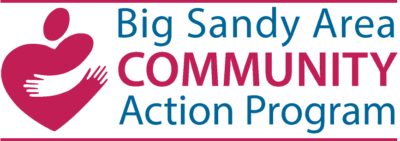
Jane E. Holycross, the leader of the Eastern Kentucky Red Cross’ Pillowcase Project, stands with Big Sandy Area Community Action Program Resource Representative Wendy Bolen at the BSACAP service office in Allen. Holycross shared information on Red Cross recommendations for disaster preparedness.
Our area is accustomed to disasters. From the flooding that plagues us each spring and summer and the ice and snow storms in the winter to the risk of tornadoes and home fires, each of us needs to make sure that our families and ourselves are ready for whatever comes.
At a recent workshop hosted by Big Sandy Area Community Action Program, Jane E. Holycross of the American Red Cross provided valuable information about Red Cross programs that our community can look to when thinking about disaster preparedness and how to recover from a disaster.
As the leader of the Eastern Kentucky Red Cross’ Pillowcase Project, Holycross shared great information about how to teach children about disasters and learn what to do when they are faced with one because as Holycross said, “It’s not a matter of if; it’s a matter of when.”
The Pillowcase Project teaches children what supplies they will need in the event of a disaster. They can gather up the things they need, put them in the pillowcase, check the item off the list printed on the fabric, and get ready to go. School and community groups can even arrange for the program, which is available for 3rd – 5th graders, to be taught by a Red Cross member at their school or meeting place.
Holycross noted that there is even a fun, free disaster preparedness smartphone app for children ages 7-11 called “Monster Guard,” which uses adorable cartoon monsters to teach kids about emergency preparedness.
But the Red Cross encourages the whole family and individuals to be ready to face potential disasters. Holycross said that among the most important things to take a look at are your disaster kit, all of the exit routes from your home or work, and your communication plan.
The Red Cross recommends that disaster kits include three days of food and water for each person, a can opener, extra medicine and medical supplies (including an extra pair of eyeglasses), flashlight, battery-powered or hand-crank radio, extra batteries, first aid kit, copies of personal documents, cell phone with charger, extra cash, baby supplies, pet supplies, extra sets of keys, extra clothing, and personal hygiene items.
The Red Cross also recommends that you look at all of the ways to exit, not only your house, but each room in your house. Ideally, everyone should have multiple exits in mind and practice making the evacuation twice each year.
If you experience a disaster, it’s important to have a meeting place and a communication plan so that family members can find one another and stay in touch. It is recommended that the communication plan include the numbers of everyone to contact and include at least one person out of state. The out of state contact may be able to receive a call from you even if local phone lines are jammed.
To help everyone stay alert to possible threats, the Red Cross suggests keeping up to date on weather reports and making preparations. They have created several free smartphone applications to assist with learning about first aid, specific threats, recovery options, and even weather alerts. Information is also available on their website, www.redcross.org.
Holycross also informed community members about the free Smoke Detector Campaign. The Red Cross will install smoke detectors that will last for 10 years in your home for free. All you have to do is ask. Community groups can even join the Red Cross to canvas local areas, going door to door, to ask each resident if they would like a smoke detector installed in their home.
Holycross said, “The most important thing we can do is really look at our homes and offices and really take the time to think about what we would do, how we would respond, if we were faced with disaster.”




